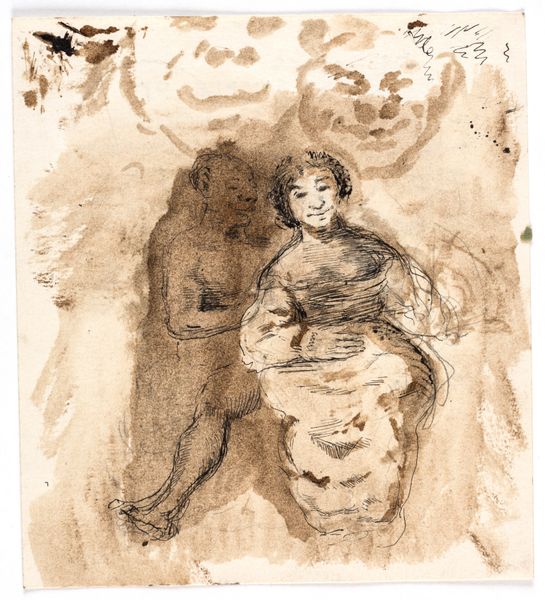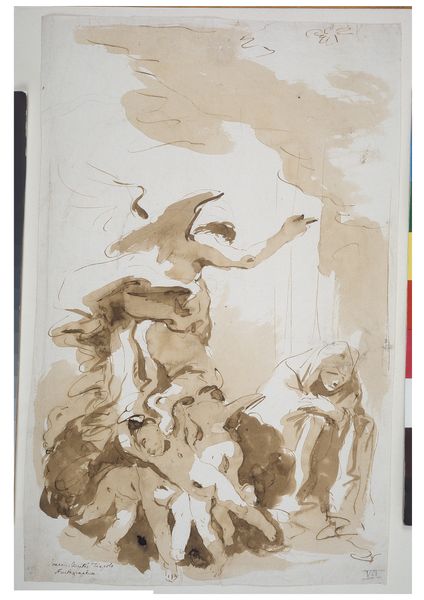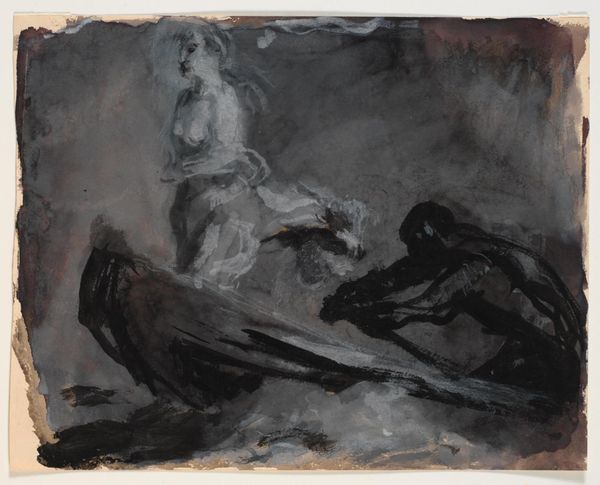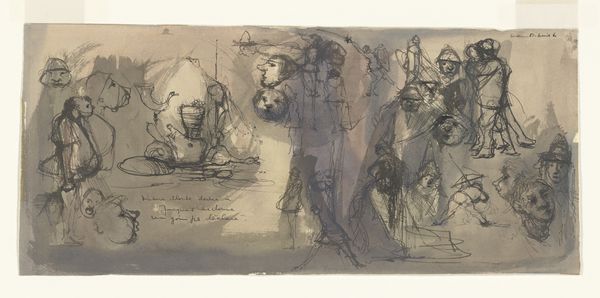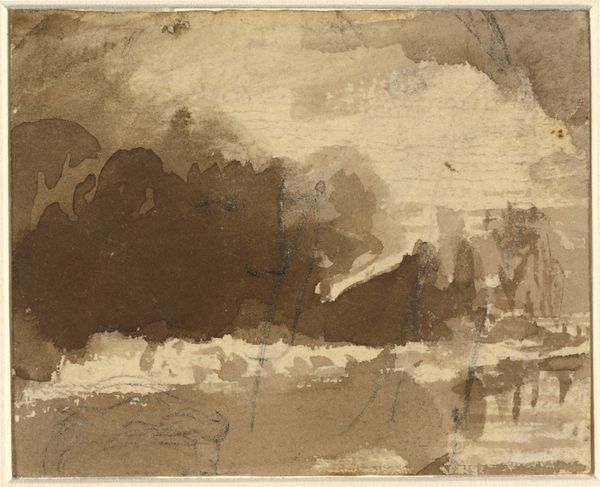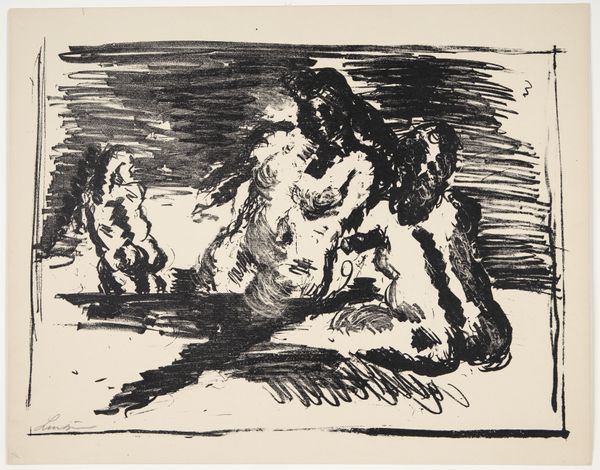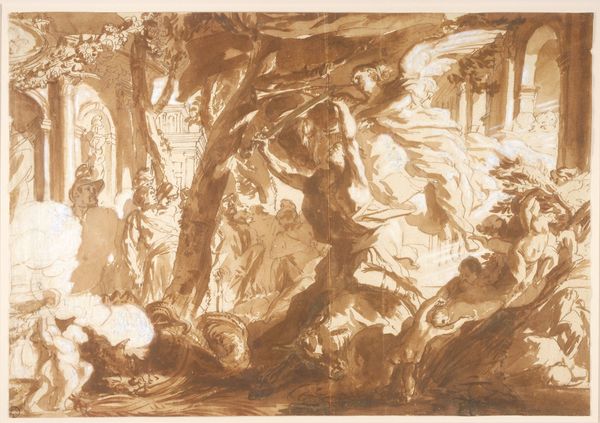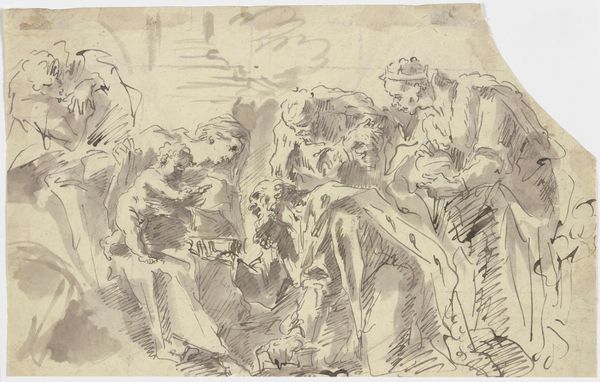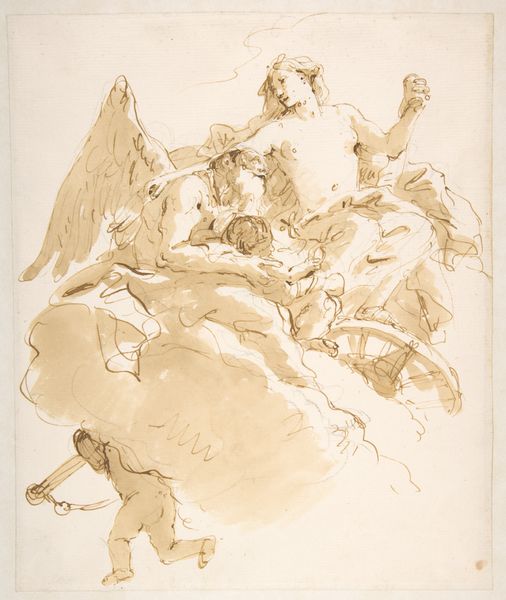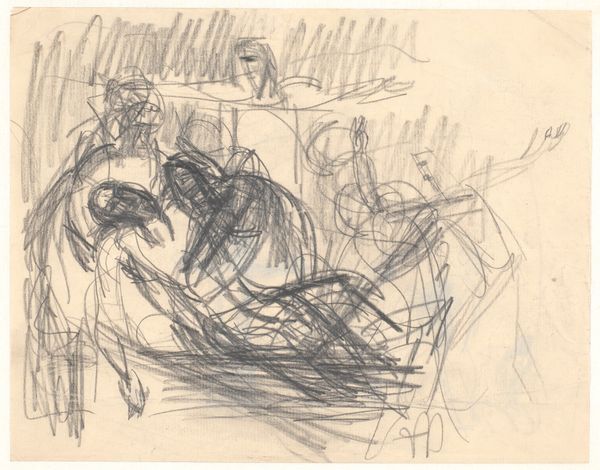
drawing, paper, ink
#
drawing
#
narrative-art
#
figuration
#
paper
#
ink
Dimensions: 200 mm (height) x 254 mm (width) (bladmaal)
Editor: Here we have Oluf Hartmann’s "Study for Diogenes," created between 1879 and 1910 using ink and drawing on paper. It feels really fragmented, almost like we're glimpsing a scene through a shattered mirror. What do you see in this piece? Curator: Hartmann's choice to depict Diogenes, the Cynic philosopher, is incredibly telling. He wasn't just about rejecting social norms; Diogenes embodied a profound critique of power structures and the hypocrisy of established institutions. How does the drawing's fragmented style speak to this rejection of conventionality, do you think? Editor: I guess it feels less like a clear narrative and more like... pieces of a statement. Almost as if a formal scene is being intentionally disrupted? Curator: Precisely. Consider the historical context – late 19th century Denmark. What social anxieties or shifts might Hartmann be responding to? This period saw intense debates around industrialization, class, and national identity. Does Diogenes' rejection of societal norms offer a commentary on these anxieties, perhaps highlighting a yearning for authenticity amidst rapid change? Editor: It’s fascinating to think of it as a rejection of all of those things, and not just, like, messiness. Curator: The apparent messiness becomes a deliberate strategy. It mirrors Diogenes' philosophical stance, challenging us to question the values we often take for granted. Who benefits from the conventional representation, and who is excluded? Hartmann subtly invites us to interrogate these questions. Editor: It gives a new appreciation for pieces that don’t just aim for a perfect aesthetic. There's room to send a pointed message. Curator: Absolutely! Hartmann's sketch is a reminder that art can be a powerful tool for social commentary and resistance, prompting viewers to challenge dominant narratives and power dynamics.
Comments
No comments
Be the first to comment and join the conversation on the ultimate creative platform.
